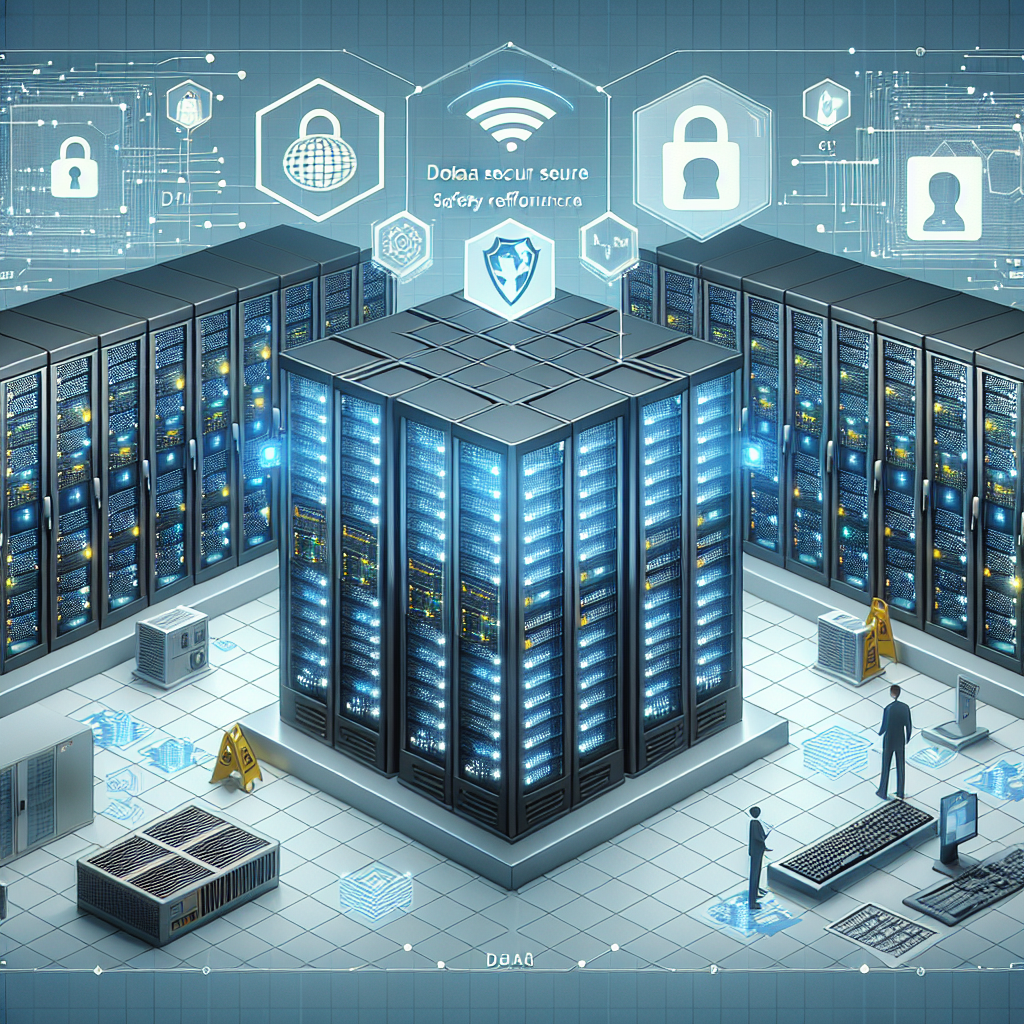Your cart is currently empty!
Tag: Essential

Server Maintenance 101: Essential Tips for Ensuring Peak Performance
Server maintenance is a crucial aspect of ensuring the smooth and efficient operation of a server. Neglecting proper maintenance can lead to performance issues, downtime, and even security vulnerabilities. To avoid these problems, it is essential to follow some key tips for maintaining your server and ensuring peak performance.Regularly update software and firmware
One of the most important aspects of server maintenance is keeping software and firmware up to date. This includes operating systems, applications, and drivers. Regular updates help fix bugs, improve performance, and enhance security. Make sure to schedule regular updates and patches to keep your server running smoothly.
Monitor server performance
Monitoring server performance is essential for identifying issues and addressing them before they escalate. Keep an eye on key metrics such as CPU usage, memory usage, disk space, and network traffic. Use monitoring tools to track these metrics and set up alerts for any abnormalities. Regularly review performance data to identify trends and make necessary adjustments.
Backup data regularly
Regular data backups are crucial for protecting your server against data loss due to hardware failures, natural disasters, or cyber attacks. Implement a reliable backup solution and schedule regular backups to ensure that your data is safe and recoverable in case of emergencies. Test your backups periodically to ensure their integrity and usability.
Manage server resources effectively
Proper resource management is essential for ensuring optimal server performance. Monitor resource usage and allocate resources efficiently to prevent bottlenecks and performance degradation. Consider implementing load balancing, virtualization, and resource pooling to maximize server efficiency and scalability.
Implement security measures
Server security is a critical aspect of maintenance to protect your data and infrastructure from cyber threats. Implement security best practices such as firewalls, antivirus software, intrusion detection systems, and access controls. Regularly update security patches and conduct security audits to identify and address vulnerabilities.
Document server configurations
Documenting server configurations and settings is essential for maintaining consistency and ensuring easy troubleshooting. Keep detailed records of hardware specifications, software installations, network configurations, and security settings. Create a comprehensive inventory of your server infrastructure to track changes and identify potential issues.
Plan for downtime
Despite your best efforts to maintain peak performance, server downtime can still occur due to hardware failures, maintenance tasks, or unforeseen events. Plan for downtime by scheduling maintenance windows, conducting regular hardware checks, and implementing failover solutions. Communicate downtime schedules to users and stakeholders to minimize disruptions.
In conclusion, server maintenance is a critical aspect of ensuring peak performance and reliability. By following these essential tips, you can keep your server operating smoothly and efficiently, minimize downtime, and protect your data from security threats. Prioritize regular updates, monitoring, backups, resource management, security measures, documentation, and downtime planning to maintain a healthy server environment.

Protecting Your Data Center: Essential Safety Measures
Data centers are a crucial component of any organization, serving as the central hub for storing and processing vast amounts of sensitive information. With the increasing threat of cyber attacks and natural disasters, protecting your data center has never been more important. Implementing essential safety measures can help safeguard your data and ensure the continuity of your operations.One of the primary safety measures for data centers is ensuring physical security. This involves restricting access to the data center to authorized personnel only. Implementing measures such as biometric authentication, access control systems, and surveillance cameras can help prevent unauthorized individuals from gaining access to the data center and potentially compromising sensitive information.
In addition to physical security, it is essential to implement cybersecurity measures to protect against cyber attacks. This includes regularly updating security software, conducting regular vulnerability assessments, and implementing encryption to secure data both in transit and at rest. Employee training is also crucial in preventing phishing attacks and other social engineering tactics that cybercriminals may use to gain access to the data center.
Another important safety measure for data centers is implementing a robust disaster recovery plan. This includes regularly backing up data, storing backups offsite, and conducting regular disaster recovery drills to ensure that data can be quickly restored in the event of a disaster. Having a well-thought-out disaster recovery plan can help minimize downtime and ensure the continuity of operations in the event of a catastrophic event.
Regular maintenance and monitoring of data center infrastructure are also essential safety measures. This includes conducting regular inspections of equipment, monitoring temperature and humidity levels, and ensuring that power sources are reliable and redundant. By proactively maintaining and monitoring data center infrastructure, you can prevent potential issues that could lead to data loss or downtime.
In conclusion, protecting your data center is essential to ensure the security and continuity of your operations. By implementing essential safety measures such as physical security, cybersecurity, disaster recovery planning, and regular maintenance and monitoring, you can safeguard your data and mitigate potential risks. Investing in data center safety measures is an investment in the long-term success and security of your organization.

Preparing for the Worst: Essential Steps for Data Center Disaster Recovery
In today’s digital age, data centers play a crucial role in storing and managing vast amounts of data for businesses and organizations. However, with the increasing reliance on technology, the risk of data center disasters has also grown. Whether it be a natural disaster, a cyberattack, or a hardware failure, data center downtime can have devastating consequences for businesses, including financial losses, damage to reputation, and loss of critical data.To minimize the impact of a data center disaster, it is essential for businesses to have a solid disaster recovery plan in place. This plan should outline the steps that need to be taken to ensure the quick and efficient restoration of data center operations in the event of a disaster. Here are some essential steps to consider when preparing for the worst:
1. Conduct a risk assessment: Before developing a disaster recovery plan, it is important to assess the potential risks that could impact the data center. This includes identifying potential threats such as natural disasters, cyberattacks, power outages, and hardware failures. By understanding the risks, businesses can develop a plan that addresses the specific vulnerabilities of their data center.
2. Backup data regularly: One of the most important steps in disaster recovery is to regularly backup data to ensure that critical information is not lost in the event of a disaster. Businesses should implement a robust backup system that stores data both on-site and off-site to protect against data loss.
3. Implement redundancy: Redundancy is key to ensuring data center resilience. Businesses should consider implementing redundant systems for power, cooling, networking, and storage to minimize the risk of downtime in the event of a failure.
4. Develop a communication plan: In the event of a disaster, effective communication is crucial to ensure that all stakeholders are informed and updated on the situation. Businesses should develop a communication plan that outlines how information will be disseminated to employees, customers, and other key stakeholders.
5. Test the disaster recovery plan: Once a disaster recovery plan is in place, it is important to regularly test and update the plan to ensure its effectiveness. Businesses should conduct simulated disaster scenarios to identify any weaknesses in the plan and make necessary adjustments.
Overall, preparing for the worst is essential for data center disaster recovery. By taking the necessary steps to assess risks, backup data, implement redundancy, develop a communication plan, and test the disaster recovery plan, businesses can minimize the impact of a data center disaster and ensure the continuity of operations in the face of adversity.
